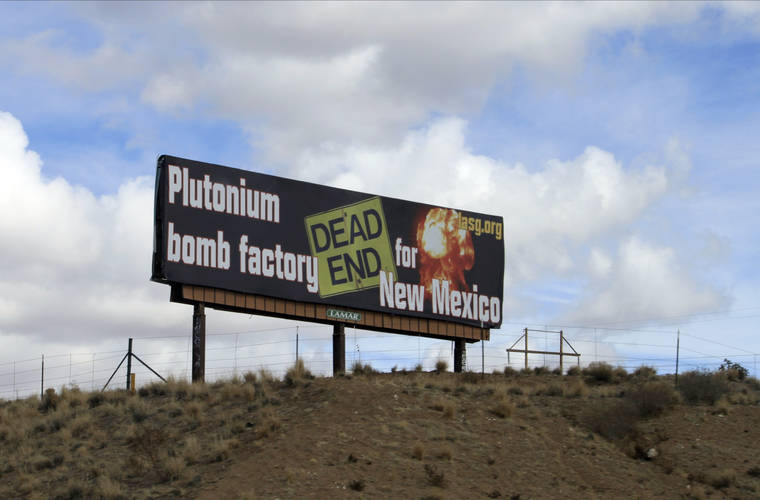ALBUQUERQUE, N.M. — Watchdog groups want the Biden administration to reconsider a decision by a U.S. agency not to conduct a more extensive environmental review related to production of the plutonium cores used in the nation’s nuclear arsenal.
The renewed request comes as federal installations in New Mexico and South Carolina face a deadline of making 80 cores per year by 2030, with the first 30 due in five years.
With jobs and billions of dollars in spending at stake, the effort to modernize the nation’s nuclear arsenal has enjoyed bipartisan support in Congress over the years, especially among New Mexico Democrats whose districts stand to benefit from the economic windfall. The Biden administration has taken swift action to reverse some policies by the Trump administration but has yet to say whether it plans to push ahead with making more plutonium cores. It does say that work is being reviewed.
Nuclear Watch New Mexico, South Carolina-based SRS Watch and California-based Tri-Valley Communities Against a Radioactive Environment sent a letter to the U.S. Energy Department last week, asking that a rigorous environmental review be done before production is ramped up at Los Alamos National Laboratory in northern New Mexico and the Savannah River Site near Aiken, South Carolina.
The groups have cited provisions of the National Environmental Policy Act, or NEPA, saying plutonium core production would significantly increase the amount of radioactive and toxic wastes generated at the two locations and that the collective environmental effects need to be considered.
“We are hopeful that a review of programs with significant environmental impacts under NEPA will return to normalcy with the new presidential administration,” said Leslie Lenhardt, an attorney with the South Carolina Environmental Law Project, which is representing the groups.
She said the Energy Department and the National Nuclear Security Administration have a new opportunity to revisit their Trump-era refusal for a more thorough environmental review.
The nuclear security agency said in an email to The Associated Press that the issues raised by the groups were considered during previous public participation opportunities.
The agency opted last fall to prepare a supplemental analysis of an environmental review done for Los Alamos more than a decade ago despite criticism that ramping up production at the lab goes beyond those initial plans and should be reexamined. A separate review was done for Savannah River.
National Nuclear Security Administration spokeswoman Ana Gamonal de Navarro said the decisions were consistent with the agency’s legal obligations and there has been no guidance to revisit the decisions amid the presidential transition.
But she also noted that it’s common for programs and activities to be reviewed under new leadership.
“NNSA’s approach to plutonium pit production will be included in this review process,” she said. “Until such a review is completed, NNSA will continue its current overall pit production timeline and strategy.”
U.S. Rep. Teresa Leger Fernandez’s office said the New Mexico Democrat feels strongly that the federal government should do everything possible to protect the health and wellness of Los Alamos employees and the rest of the community.
“They must ensure that the public has confidence in the lab’s safety and all environmental impact decisions are done according to the law, science and are in the best interest of New Mexican families and stakeholders,” said Maria Hurtado, a spokeswoman for the new congresswoman.
The city of Santa Fe and Santa Fe County in January passed resolutions seeking further study.
Watchdog groups have raised concerns about contamination if new plutonium warhead factories are established in New Mexico and South Carolina that resemble the Rocky Flats facility in Colorado, which had a long history of leaks, fires and environmental violations and needed a $7 billion cleanup that took years to finish.
The mission of producing the plutonium cores began at Rocky Flats in the 1950s and was eventually moved to Los Alamos in the late 1990s. Dogged by safety problems and concerns about a lack of accountability, production at Los Alamos has happened in fits and starts over the years. It’s been shut down at times, and only a handful of prototypes were made in fiscal year 2019.
The cost of the work also has spurred criticism. A 2019 analysis by the Congressional Budget Office estimated that expanded pit production plans could cost up to $9 billion over the next decade but that the estimate was very uncertain. The Government Accountability Office last year pointed to National Nuclear Security Administration and independent studies that have cast doubt on the agency’s ability to prepare the two planned factories in time.


